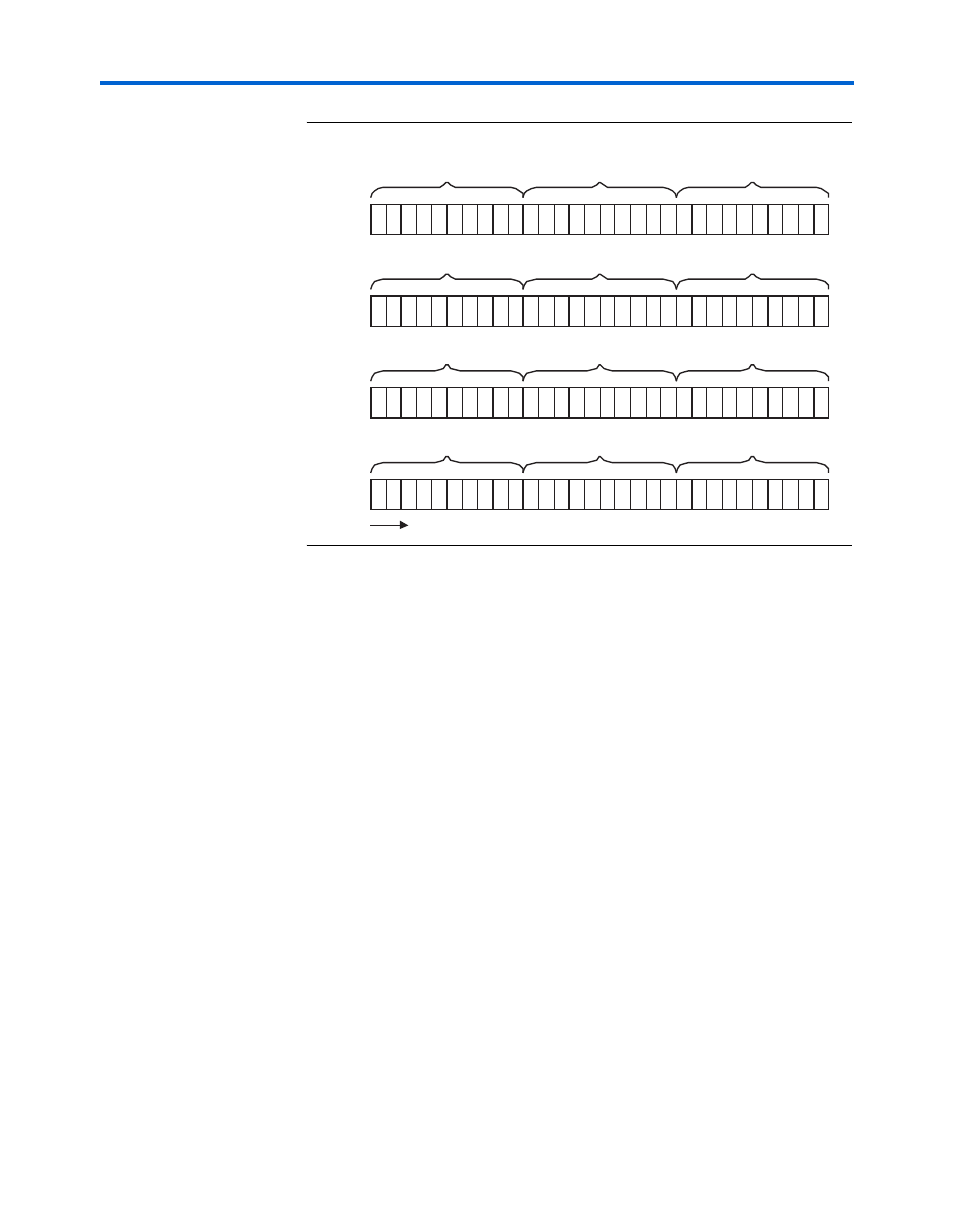Running disparity rules, Valid and invalid code-groups, Figure 2–10. four lane serial transmission order – Altera SerialLite II Protocol User Manual
Page 20

20
Altera Corporation
SerialLite II Protocol Reference Manual
Physical Layer Description
Figure 2–10. Four Lane Serial Transmission Order
Running Disparity Rules
The SerialLite II rules for running disparity are as specified in Clause 36
of the IEEE 802.3-2002 specification.
Valid and Invalid code-groups
Not every 10-bit value constitutes a valid 10-bit code. The 10-bit space is
only partially populated with valid combinations.
Valid and invalid 10-bit code groups for SerialLite II are as specified in
Clause 36 of the IEEE 802.3-2002 specification. This clause defines both
the data code-group (D code-group) and the special code-group (K
code-group). See
“8b/10b Code Groups” on page 2–75
for a complete list
of these groups.
b c d e i
f g h j
Symbol 0
Time
a
b c d e i f g h j
Symbol 4
a
b c d e i
f g h j
Symbol 8
a
b c d e i
f g h j
Symbol 1
a
b c d e i f g h j
Symbol 5
a
b c d e i
f g h j
Symbol 9
a
b c d e i
f g h j
Symbol 2
a
b c d e i f g h j
Symbol 6
a
b c d e i
f g h j
Symbol 10
a
b c d e i
f g h j
Symbol 3
a
b c d e i f g h j
Symbol7
a
b c d e i
f g h j
Symbol 11
a
Lane
# 2
Lane
# 3
Lane
# 0
Lane
# 1
